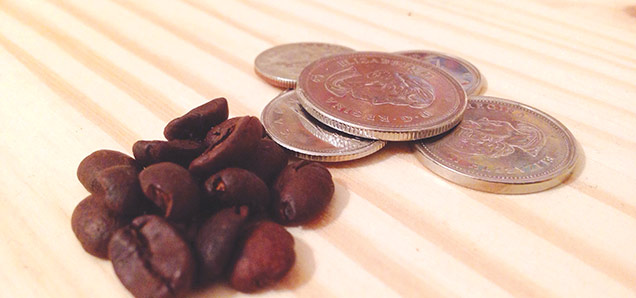The Conscious Campus: Global warming and the price of coffee
 CREDIT: STEPHANIE LAI
CREDIT: STEPHANIE LAIOur CO2 emissions have something to do with the rising cost of coffee.
Mary-Lee is sustainability co-ordinator for Fanshawe College.
It seems every time we turn around to buy our cup of coffee, the price is going up. And even if we remember to bring our reusable mug, our wallets still take a hit. What you may not know is that you have much more to do with the rising price of coffee than you probably realize.
While there has always been considerable debate on global warming, 97 per cent of climate scientists agree that climate warming trends over the past century are likely due to human activities.
In the “Fifth Assessment Report: Climate Change 2013,” the Intergovernmental Panel on Climate Change states that “warming of the climate system is unequivocal, and since the 1950’s, many of the observed changes are unprecedented over decades to millennia. The atmosphere and ocean have warmed, the amounts of snow and ice have diminished, sea level has risen, and the concentrations of greenhouse gases have increased.”
The coffee plant is a regional crop, requiring specific conditions to grow and thrive, including temperature range, altitude, wind exposure and regular seasonal conditions, such as the amount and frequency of rainfall. As the temperature increases and weather patterns shift and change, the number of regions suitable for growing coffee is decreasing. Those regions left that can produce coffee are producing less because higher temperatures affect the health and vitality of those coffee plants.
Invasive species and pests that were once held in check by consistent weather and temperatures are now thriving and wreaking havoc on coffee plantations. Global warming also causes severe weather events, and Brazil, one of the world’s top coffee producers, is currently experiencing a severe drought that has seriously hurt coffee plantations, which are sensitive to rainfall levels.
Further compounding the issue, deforestation of the Amazon rainforest has increased by 190 per cent in August and September of 2014 as compared to 2013. As the trees are burned, all the carbon they have stored is released back into the environment, increasing greenhouse gases and contributing to global warming.
Additionally, trees and forests play an important role in these ecosystems by absorbing moisture trapped in the environment, breathing it out as water vapor to form clouds that produce rain. This recycling of water – evapotranspiration – is an important function of the rainforest and plays an important role in maintaining rainfall and seasonal regularity in regions surrounding the rainforest. As more and more of the Amazonian Rainforest is burnt and slashed, more carbon is being released and less rain is falling—a deadly combination for coffee plantations in South America.
All this has made it harder than ever before to get the coffee from the fields to your cup, and the price of coffee is merely a reflection of that. It is hard to imagine how you could impact this global crisis, but the little things you do all day add up to a big impact.
Any time you use anything that requires electricity, turn on a light, drive your car or eat meat, you are contributing to CO2 emissions that cause global warming and ultimately, the increased cost of your daily cup of coffee.
For tips and suggestions on how you can help mitigate global warming, please visit Green Tips at www.fanshawec.ca/sustainability.













